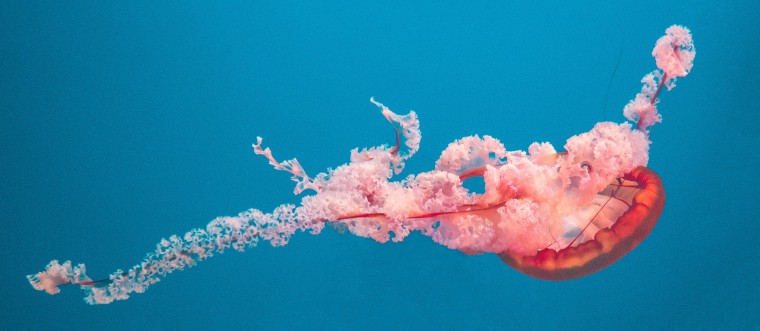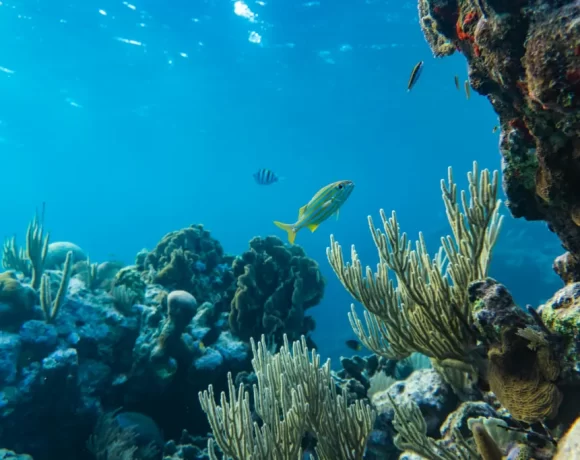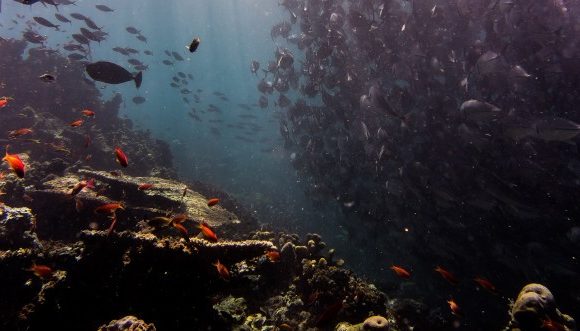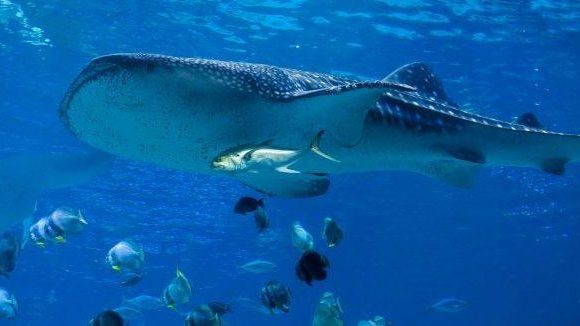Coronavirus: Deserted Beach in the Philippines Is Now Teeming With Pink Jellyfish

Thousands of local and foreign tourists flock the many world-class beaches of the Philippines during the summer months that start from March to May. However, with the coronavirus pandemic striking fear around the world, the entire country is under lockdown and its most visited beaches are completely deserted, or at least by humans. In one of the beaches in Palawan, a much coveted beach destination in the Philippines, biologists have witnessed thousands of pink jellyfish known as “sea tomato” invading the water, a scene that hasn’t been seen in the last couple of years due to the influx of tourists around these beaches that caused these creatures to stay near the bottom of the ocean.
But now that there are no people around their natural habitat, this population of pink jellyfish no longer feels threatened making them rise to the surface.
While the sight of a bed of pink jellyfish that almost painted the water pink is astounding, experts beg to disagree that this is a completely new phenomenon in this part of the Philippines.
In fact, this jellyfish population has always been in this area during this time of the year. According to Dr. Sheldon Rey Boco, co-founder of the Philippine Jellyfish Stings Project and a PhD candidate in marine biology at Griffith University in Australia, this bloom is present in late January or February, but due to tidal, wind and current conditions, they are only more visible in March.
He also added that the populations of pink jellyfish could fluctuate over time. There are years when they are high and there are times when they are so few that no one ever notices them.
Department of Natural Resources (DENR) Undersecretary Benny Antiporda also added that the presence of pink jellyfish in Palawan occurs every year due to the ocean current bringing them in Corong-Corong bay.
Although the pandemic is not the main reason for the pink jellyfish population to flourish in Palawan, the lockdown that’s being enforced on the island is playing a major role in this phenomenon because there are no locals to harvest them allowing this population to increase in number. The absence of any water activities like fishing and boating also facilitates the uninterrupted distribution of zooplankton food for the jellyfish.
According to Dr. Ryan Baring, a lecturer in Marine Biology at Flinders University said that the COVID-19 lockdown is not the sole reason for this bloom in pink jellyfish population.
But it’s still too early to tell without any further experimental research on how this quarantine is affecting the marine ecology in Palawan causing the population of pink jellyfish to flourish in this part of the Philippines.
While this is definitely a beautiful sight, a growing number of jellyfish isn’t always beneficial because they can cause problems to local fishermen and other seaside communities.
But experiencing this phenomenon gives a glimmer of hope to a lot of people that perhaps, this pandemic has brought some benefits to the environment because it allowed the planet and all its creatures to heal and get back to their prime again.
Sources:
Read about the impact the current pandemic has had on marine life















